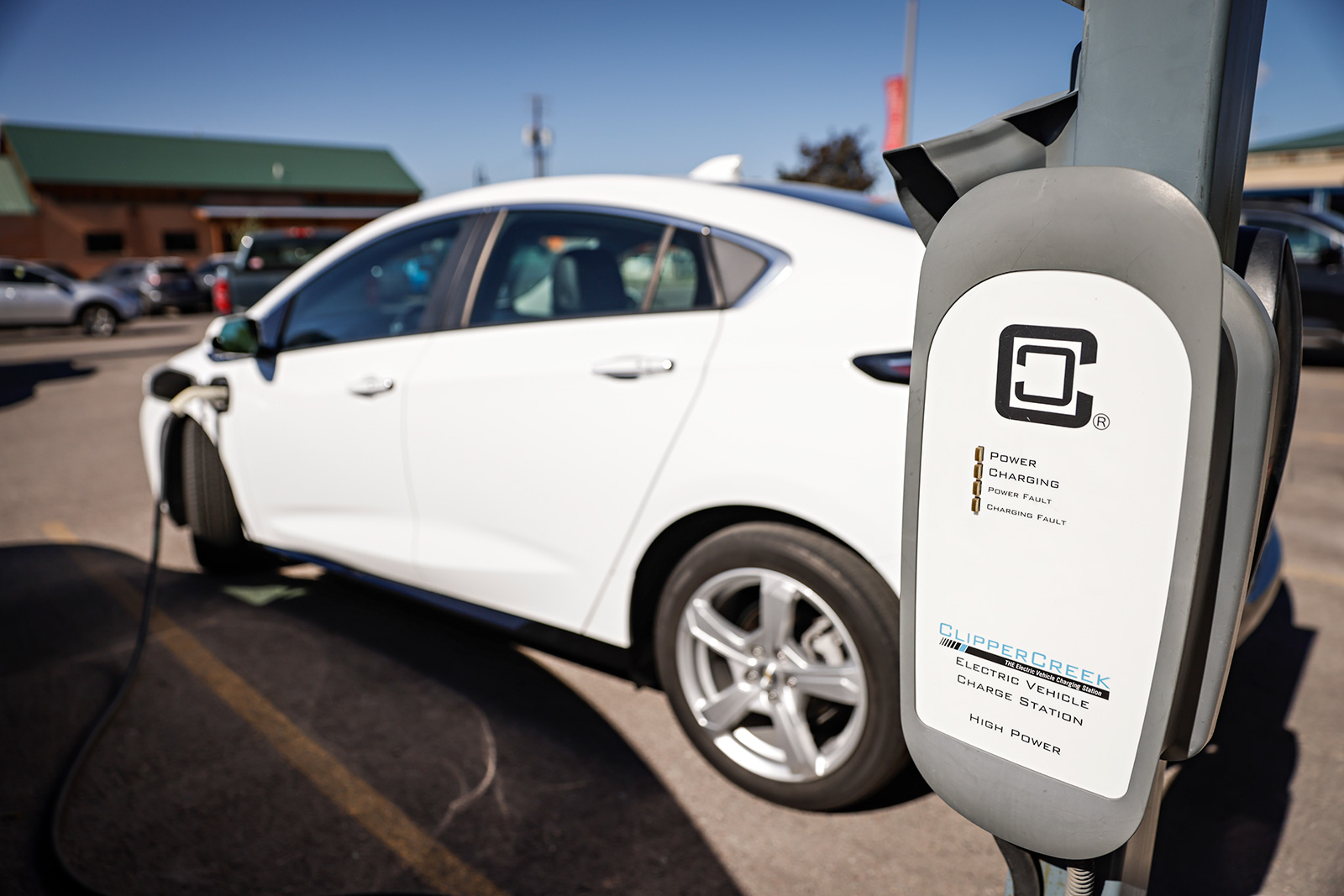Montana Rolls Out Electric Vehicle Charging Station Installation Plan
The state will receive $43 million in federal funds to install charging stations on interstates and U.S. highways 93 and 2
By Maggie Dresser
State agencies have submitted a final plan to the Federal Highway Administration that will allocate $43 million in federal funds to establish an electric vehicle (EV) charging station program in Montana, which includes U.S. Highway 93 and U.S. Highway 2 among its priorities.
The Montana Department of Environmental Quality (DEQ) and the Montana Department of Transportation (MDT) submitted the plan for the National Electric Vehicle Infrastructure Formula (NEVI) Program to fund infrastructure over the next five years for major highways or “alternative fuel corridors,” including Interstate 15, Interstate 90, Interstate 94, U.S. Highway 2 and U.S. Highway 93.
“We anticipate there will be more electric vehicles driving on Montana’s roads in the near future,” Rob Stapley of MDT said during a July webinar.
Officials anticipate the plan’s approval by the end of September with details finalized this winter.
The EV charging stations will be required to provide 150 kilowatts to a single vehicle along with universal Combined Charging Systems (CCS), a standard for charging electric vehicles. The plan also requires that stations must be within one mile of amenities like restrooms and restaurants that will be available for drivers to use while their vehicles are charging.
There are currently at least a dozen charging stations in the Flathead Valley, most of which are in Whitefish but also extend to Kalispell, Bigfork, Blacktail Mountain, Lake McDonald and East Glacier, according to the U.S. Department of Energy Alternative Fuels Data Center.
Statewide, most of the current charging stations exist on Interstates 90 and 15 and Highway 93, but there are no stations in the central and northeastern regions of Montana.
“The focus is on locations that are hubs,” said Kyla Maki, a DEQ energy resource professional. “Those are defined as an intersection of at least two major routes and gateway communities near national parks or other recreation areas.”
According to the plan, Montana’s phased approach will address larger charging gaps in the first two years with stations spaced no more than 100 miles apart and will target 50-mile spacing in the final years, citing Montana’s low population density and slow EV adoption rate.
In the first year, Montana will focus on filling large charging gaps with stations along Interstates 15, 90 and 94 with officials adding at least 10 new locations, according to the plan.
U.S. Highway 93 and U.S. Highway 2 will be prioritized in years two through three, with Glacier National Park and other tourism destinations taking precedence.
In January 2022, there were just under 2,000 EV’s registered in Montana, Maki said, and officials estimate there will be 30,000 Montana residents driving EV’s while key corridor routes will see 100,000 visitors by 2030.
Priority communities include the eastern and central regions of the state along with Livingston, Three Forks and Superior in western Montana.
Essex, located off U.S. Highway 2, has been identified as charging constraint area, with electricity supply and infrastructure “very limited.”
Charging station construction is expected to begin in 2023.
“Montana has developed a plan that’s put us on a path to an accelerated and equitable option,” DEQ Director Sonya Nowakwoski said. “It reduces transportation-related emissions and positions the state to be part of electrification efforts across the nation.”